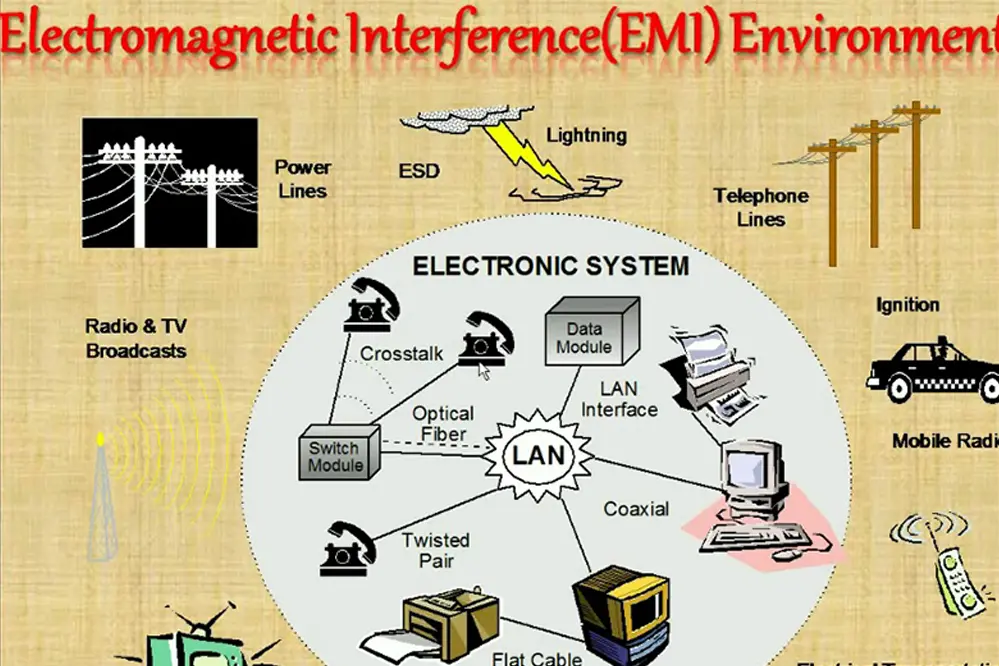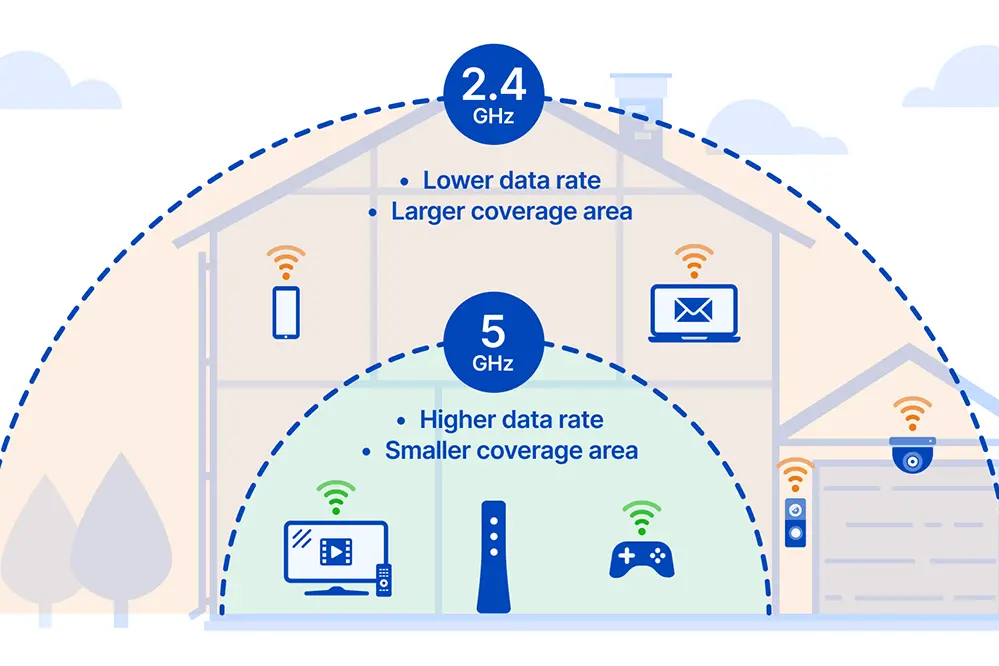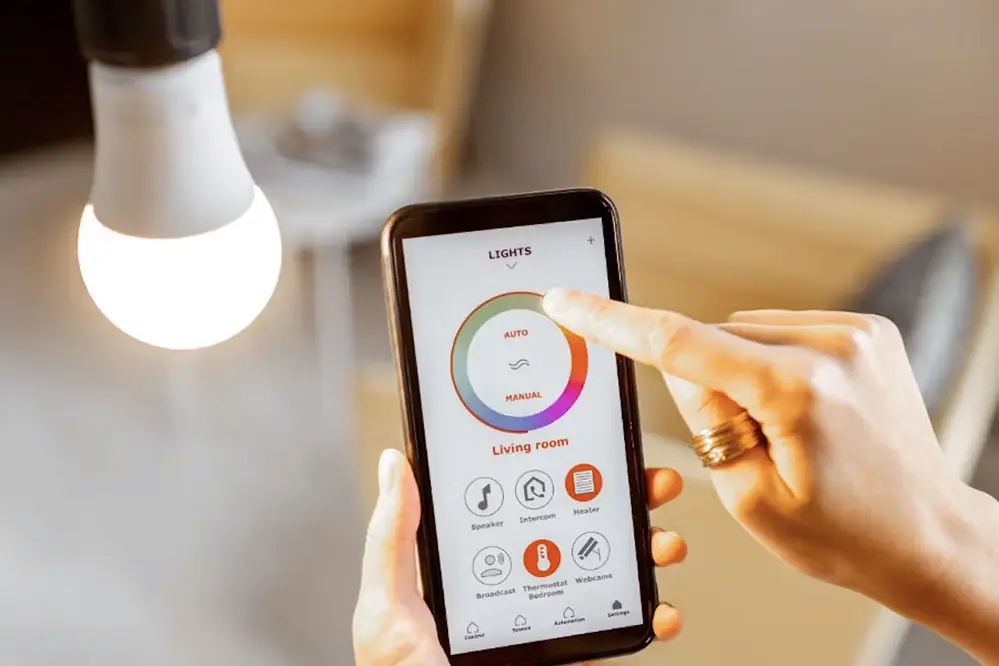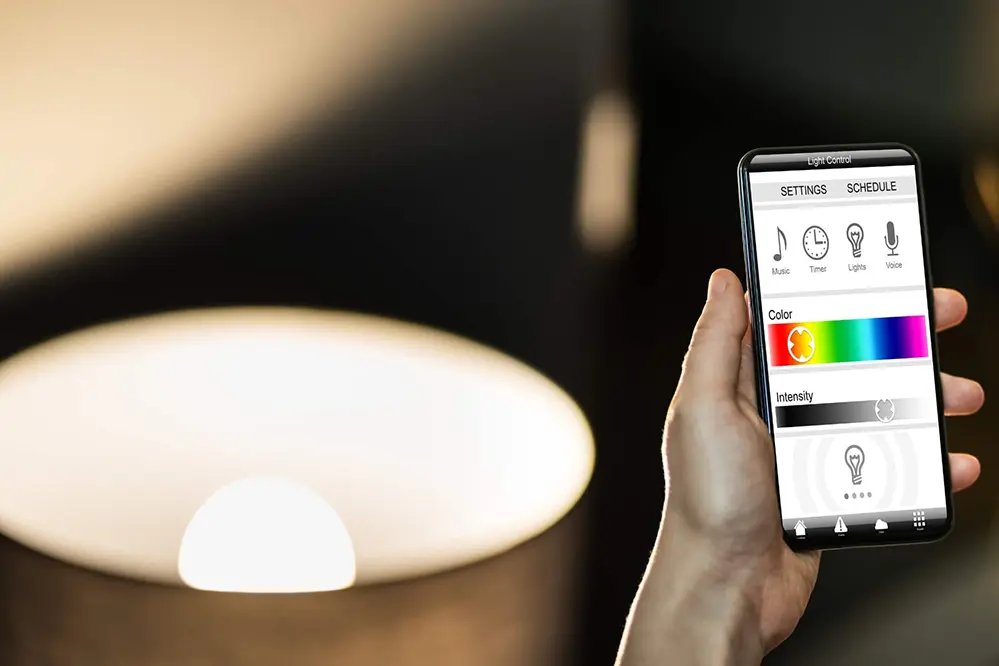Do LED lights interfere with WiFi and other appliances? This question might seem trivial, but it touches on a growing concern in our increasingly connected world. As more households adopt LED lighting for its energy efficiency, many are unaware of the potential impact on their wireless networks and electronic devices. A common misconception is that all LED lights are created equal, but the truth is that some can cause significant electromagnetic interference, leading to dropped WiFi connections and affecting everything from streaming services to smart home devices.
The benefits of addressing this issue are manifold. By identifying and mitigating interference, you can ensure uninterrupted connectivity, enhance the performance of your devices, and enjoy the full benefits of both LED lighting and wireless technology. Understanding these challenges is essential for anyone looking to maintain a seamless digital environment. In this article, we will cover key points such as the science behind electromagnetic interference, how to identify problematic LED lights, and practical solutions to minimize disruption.
Dive into this exploration to discover how you can optimize your home environment and maintain harmony between your lighting and technology. By understanding the interplay between LED lights and WiFi, you can create a space that supports both innovation and connectivity, ensuring your home remains a beacon of modern convenience and efficiency.
What Causes LED Light Interference?

LED lights have become an integral part of modern lighting solutions due to their energy efficiency and longevity.
However, the seemingly harmless LED can occasionally disrupt the electromagnetic balance within our homes. This disturbance, known as Electromagnetic Interference (EMI), occurs when the electronic circuits in LED lights emit frequencies that overlap with wireless communication signals, such as WiFi.
This overlap often originates from the power supplies in LEDs, specifically the switching power supplies, which generate high-frequency noise. These switching circuits, vital for converting electrical currents into high output light efficiently, inadvertently create a spectrum of signals that interfere with other devices’ frequencies, including various home appliances that rely on stable wireless connections.
The impact of such interference manifests as diminished internet speeds, disrupted streaming services, and unexpected malfunctions in smart home appliances. Despite these challenges, advances in technology have ushered in more sophisticated solutions, such as EMI filters and shielding techniques in LED designs, which significantly reduce these unwanted interactions.
By understanding the causes of LED interference, we empower ourselves to make informed decisions and pursue lighting options that harmonize with our digital lives.
Understanding WiFi Signals

WiFi signals are the backbone of our digital connectivity, facilitating seamless access to the world of online information and services. At its core, WiFi utilizes radio wave technology to exchange data rapidly between devices. These signals are typically broadcast over specific frequencies, primarily 2.4 GHz and 5 GHz bands, ensuring robust and efficient communication.
Interestingly, WiFi signals are inherently resilient, designed to traverse cluttered environments and penetrate walls. However, despite their robustness, they remain susceptible to interference from other electronic devices. This interference can occur particularly in densely populated electromagnetic environments, where multiple devices compete for limited frequency space.
It’s crucial to recognize that various factors can affect WiFi performance, including physical obstructions and the presence of overlapping electromagnetic emissions. LED lights, when improperly shielded, can contribute to this interference, albeit inadvertently. Understanding these dynamics empowers users to optimize their WiFi setup and ensure consistently high-speed connectivity.
While interference remains a potential concern, advances in WiFi technology continuously strive to mitigate its impacts. By staying informed about these advances, we can navigate our increasingly digital world with confidence and assurance.
How LED Lights Affect WiFi and Appliances
LED lights, renowned for their energy efficiency, possess the ability to sometimes inadvertently impact WiFi connectivity and other electronic appliances. This is typically due to electromagnetic interference, which can occur when LED drivers emit radiofrequency emissions.
In the greater context of a connected world, these emissions manifest as “electromagnetic noise.” Although this noise is a fraction of what the entire spectrum experiences, it may still affect certain devices. By adopting high-quality LED products with proper shielding and ensuring a strategic placement of WiFi routers, one can easily surmount these challenges, paving the way for a seamlessly integrated smart home environment.
The Role of LED Drivers
LED drivers are essential components—transforming—the electrical current to the specifications that enable consistent and safe operation of LED lighting systems.
A well-designed LED driver significantly reduces electromagnetic interference, allowing for seamless integration into technology-rich environments.
Understanding the critical functionality of LED drivers highlights their influence in reducing radiofrequency emissions, thereby minimizing the potential for interference with WiFi and other sensitive electronics in modern households.
Investing in premium LED drivers—not only fortifies the safe and efficient performance of your LED systems—but also enhances electromagnetic compatibility, supporting an uninterrupted, connected digital experience.
EMI Emissions from LEDs
Electromagnetic interference (EMI) from LED lights can occasionally disrupt the signals of WiFi and other electronic devices, primarily when poorly shielded.
- Sources of EMI: Power supplies and LED drivers.
- Frequency Overlap: Some LED systems operate on frequencies near WiFi bands.
- Shielding Measures: Quality LEDs incorporate robust materials to mitigate interference.
- Installation Practices: Professional setup can significantly reduce EMI impact.
Moreover, understanding the nature of EMI emissions from LED components is crucial for creating a technologically harmonious space.
By selecting high-quality LED lights and following best practices, interference with WiFi and appliances can be effectively minimized.
Common Symptoms of Interference
When LED lights interfere with other devices, users may notice a sudden decrease in network speed, irregular disconnections, or a noticeable delay in response times.
These connectivity issues tend to be more prominent during peak usage periods of the day.
For example, users might find their smart devices and streaming services experiencing buffering or lag (particularly noticeable during high-demand operations) as symptoms.
Appliances and gadgets may also experience transient operational issues like unexpected resets, strange noises, or flickering screens.
Such occurrences can be frustrating, but understanding these symptoms empowers individuals to identify and take corrective action. Recognizing these patterns helps not only in troubleshooting but also underscores the importance of preventing potential disruptions.
Ultimately, it’s crucial to ensure that today’s tech plays well together. With awareness, users can make informed choices in digital devices, optimizing their interconnected experiences for maximum efficiency and satisfaction.
Do LED Lights Interfere with WiFi and Other Appliances?

LED light bulbs, celebrated for their energy efficiency and longevity, have become a popular choice in many households and commercial settings.
These lights, in very rare circumstances, run on a frequency similar to some electronic devices, which could theoretically cause interference with the signals emitted from certain appliances. However, such interference is typically minimal and often overshadowed by other more prominent sources of connectivity disruption, ensuring that general functionality remains unaffected.
Interestingly, some LED lights use a switching power supply that can emit electromagnetic interference, impacting the electromagnetic field around them and potentially involving electromagnetic radiation. In exceptional cases, this emission might contribute to minor effects on WiFi performance or communication with smart appliances within close proximity.
Overall, the occurrence of LED lights having a detrimental impact on WiFi and other electronic devices is quite rare, reassuring users that their modern setups will continue to thrive. Vigilance in selecting high-quality LED products, along with proper installation and placement, further reduces any potential interference, paving the way for a harmonious and cutting-edge living environment.
Identifying Interference Sources
To expertly navigate interference challenges, it is essential to accurately identify the sources that may influence your electronic environment.
Primarily, older or poorly designed electronic devices are known to emit signals or electromagnetic interference that might affect network quality. LED lights, particularly those using outdated technology or substandard components, can occasionally contribute to this phenomenon by emitting interference in close range to sensitive equipment. Additionally, other household items such as microwave ovens and cordless phones not equipped with modern shielding might introduce similar issues.
Moreover, extensive wiring or an excessive number of connected gadgets in a concentrated area can amplify interference. As connections overlap, ensuring you employ certified equipment and proper cable management becomes crucial for reducing potential signal disruption and maintaining seamless connectivity.
Ultimately, being equipped with the knowledge to discern and mitigate interference sources enables a robust technological ecosystem. Identifying and addressing potential disruptors, such as older LEDs or cluttered spaces, empowers you to maintain optimal performance of your WiFi and other appliances. Embracing high-quality devices reinforces a future-proof environment that fosters innovation and uninterrupted connectivity.
Testing for Interference
Testing for interference forms an essential progression in the quest for unhindered connectivity. It requires a strategic approach.
Begin by isolating LED lights while monitoring WiFi performance indicators. This simple experiment allows observation of any impact.
You can use RF spectrum analyzers to identify electromagnetic interference patterns, which can serve as a roadmap to averting disruptions. Alternatively, logging tools can provide insights into irregularities, uncovering when and why interference peaks occur.
Consistent evaluation encourages confidence that your infrastructure is fortified against unexpected disturbances. Ultimately, these diagnostics illuminate pathways for fine-tuning your environment to prioritize innovation and seamless functioning. Armed with these insights, “troubles” become opportunities for enhanced efficiency and performance.
Mitigating LED Light Interference
To mitigate LED light interference, an array of transformative strategies exists, each with its potential rewards. Consider replacing older models with newer LED bulbs that carry improved circuitry to reduce electromagnetic emissions, reassuring an optimistic relationship between lighting and connectivity.
Exploring the relocation of wireless equipment to a different area can also yield substantial benefits. By maintaining a distance between LED lights and routers, you effectively diminish the interference risk. Moreover, reinforcing your infrastructure with high-quality, shielded cables and employing RF filters can further optimize signal clarity. Embracing these solutions not only enhances system stability but also lays the groundwork for a future enriched with innovation and unobstructed network efficiency.
Choosing Quality LEDs
Quality LEDs are paramount in mitigating interference issues that might affect WiFi or other appliances. Selecting high-quality LEDs enables optimal functionality, sparking innovation in how we illuminate our lives.
When choosing LED lights, prioritize brands known for robust engineering and reliable performance vetted through rigorous testing. Such companies invest in superior circuitry and shielding, minimizing electromagnetic interference and ensuring your wireless devices operate seamlessly.
Additionally, seek LEDs certified by reputable standards organizations, as their endorsement signals products designed not only for longevity and sustainability but also for technological harmony. These LEDs safeguard against disruptions, asserting an optimistic overlap of illumination and connectivity.
High-quality LEDs, many with a blocking feature for electromagnetic emissions, are crucial for areas with dense electronic traffic. Focus on options labeled interference-resistant, enhancing your network environment and striving for perfection in modern living spaces.
Ultimately, investing in quality LEDs is a crucial step toward establishing environments that are both technologically advanced and interference-free.
Upgrading WiFi Equipment
Enhancing your WiFi setup to manage bandwidth effectively is a proactive strategy to ensure impeccable connectivity amid a world brimming with digital demands.
- Assess Current Equipment: Examine your existing router and components to identify any outdated or underperforming elements that may hinder performance.
- Consider New Technology: Look for routers with the latest technology, like Wi-Fi 6, offering improved speed and connectivity.
- Optimize Placement: Position your router in a central, elevated location free from obstructions to maximize signal reach and strength.
- Enhance with Extenders: Use WiFi extenders or mesh systems to broaden coverage and eliminate potential dead zones in expansive areas.
Upgrading doesn’t just mean buying new—it’s about strategic enhancements to support modern connectivity needs.
Embrace the synergy of advanced devices and refined placement to achieve a robust, reliable network capable of supporting all your digital endeavors.
Alternative Lighting Solutions
When considering lighting options, explore solutions that enhance your environment without impacting other appliances, including your WiFi network.
Incandescent and halogen bulbs remain traditional alternatives without known WiFi interference.
Beyond conventional choices, smart lighting systems are evolving rapidly to provide a blend of efficiency and compatibility, offering innovative features that seamlessly integrate with your home’s ecosystem, minimizing disruptions and maximizing comfort, customization, and energy savings.
Additionally, advancements in lighting technology such as OLED panels present a modern solution as they produce minimal electromagnetic interference. As technology progresses, these non-disruptive alternatives become more accessible, making it easier than ever to harmonize your home’s ambiance and connectivity. By embracing these cutting-edge options, you can illuminate your space and simultaneously maintain an efficient, interference-free digital environment.
When to Consult a Professional
If your LED lights seem to interfere with WiFi or other appliances, consider expert help.
In recent years, professional electricians and lighting consultants possess advanced diagnostic tools that offer precise solutions to the problems posed by electromagnetic interference. These experts can accurately assess your home’s specific needs, ensuring that your appliances and lighting systems coexist harmoniously.
Moreover, it’s not just about resolving current issues. Consulting a professional can help prevent future problems by providing insights on optimal lighting design that enhances connectivity, improves energy efficiency, and bolsters device performance. An expert’s guidance can lead you to the most advanced, non-disruptive technologies available today.
Taking the proactive step to engage with a professional not only rectifies existing challenges but also enlightens you on future-proof strategies that align with your home’s aesthetic and technological advancements. Their expertise ensures you achieve the perfect balance of innovation, comfort, and connectivity.
Ultimately, investing in expert advice can pave the way for a more efficient and harmonious living space.
Benefits of Interference-Free Networks
Imagine a world where your digital experiences are uninterrupted, with every device communicating seamlessly with each other.
In recent years, a study demonstrated that seamless network integration significantly enhances productivity, allowing users to focus more on their tasks without the frustration of connectivity issues undermining their momentum.
Thus, it’s no small feat that today’s households increasingly recognize the importance of maintaining an interference-free environment to maximize the potential that technology offers and enhance everyday living experiences.
Building the backbone of your home network strategically ensures that every device operates at its highest potential, regardless of the demand placed upon it by 3D gaming, video streaming, or extensive remote work teleconferencing.
An interference-free network does more than just support existing technology; it inspires innovation and creativity by providing a reliable and robust platform.
Future of LED Technology and WiFi Compatibility
Starting with innovation, LEDs illuminate a promising future.
The quest for unblemished WiFi connectivity continues to inspire technological breakthroughs. As LED advancements evolve, the focus sharpens on ensuring seamless coexistence of lighting technology with network reliability. Industries are actively researching solutions to enhance the coexistence of these innovations, further embracing an ever-connected era.
LED technology and WiFi can harmoniously coexist.
Innovation unfolding in LEDs – like the miniaturization of components and advanced engineering solutions – promises to forge harmonious synergies between lighting and digital connectivity, fostering improved user experiences.
As we look ahead, emerging technologies hold transformative potential in redefining how LEDs interact with WiFi, promising a world where interference is things of the past. The dedication to advancing LED technology assures not just novel illumination but also groundbreaking connectivity enhancements, a testament to the resilience of human ingenuity.
Practical Tips for Homeowners
To mitigate potential interference between LED lights and WiFi, start by examining your home’s existing electrical setup.
In recent years, technological advancements, including a notable shift towards LED lighting, transformed many households. Yet, some may still experience WiFi interference under specific circumstances, interfering with their otherwise seamless connectivity experience.
First, consider repositioning routers away from LED lights or any electronic devices to avoid signal disruption. This strategic placement can enhance your network’s performance without compromising lighting convenience.
Additionally, invest in high-quality LED bulbs designed to operate on different frequencies from your network, ensuring a robust and uninterrupted internet connection throughout your home.
Ultimately, being proactive and informed can help create a harmonious living space, blending efficient lighting with seamless digital connectivity.
Conclusion
LED lights have the potential to interfere with WiFi and other appliances, but this interaction is not universal. By understanding the specific conditions under which interference occurs, homeowners can effectively minimize any disruptions. This knowledge empowers individuals to optimize their lighting systems without compromising network efficacy.
A balanced approach is key to integrating LED lights within the home environment. Mindful positioning and selecting quality products can significantly reduce the likelihood of interference. Such strategies ensure that both energy efficiency and digital connectivity are maintained.
Ultimately, this proactive mindset allows for a harmonious coexistence of LED lighting and wireless technology. By addressing potential issues thoughtfully, homeowners can enjoy a smart and seamlessly interconnected future, where innovation and convenience thrive together.





